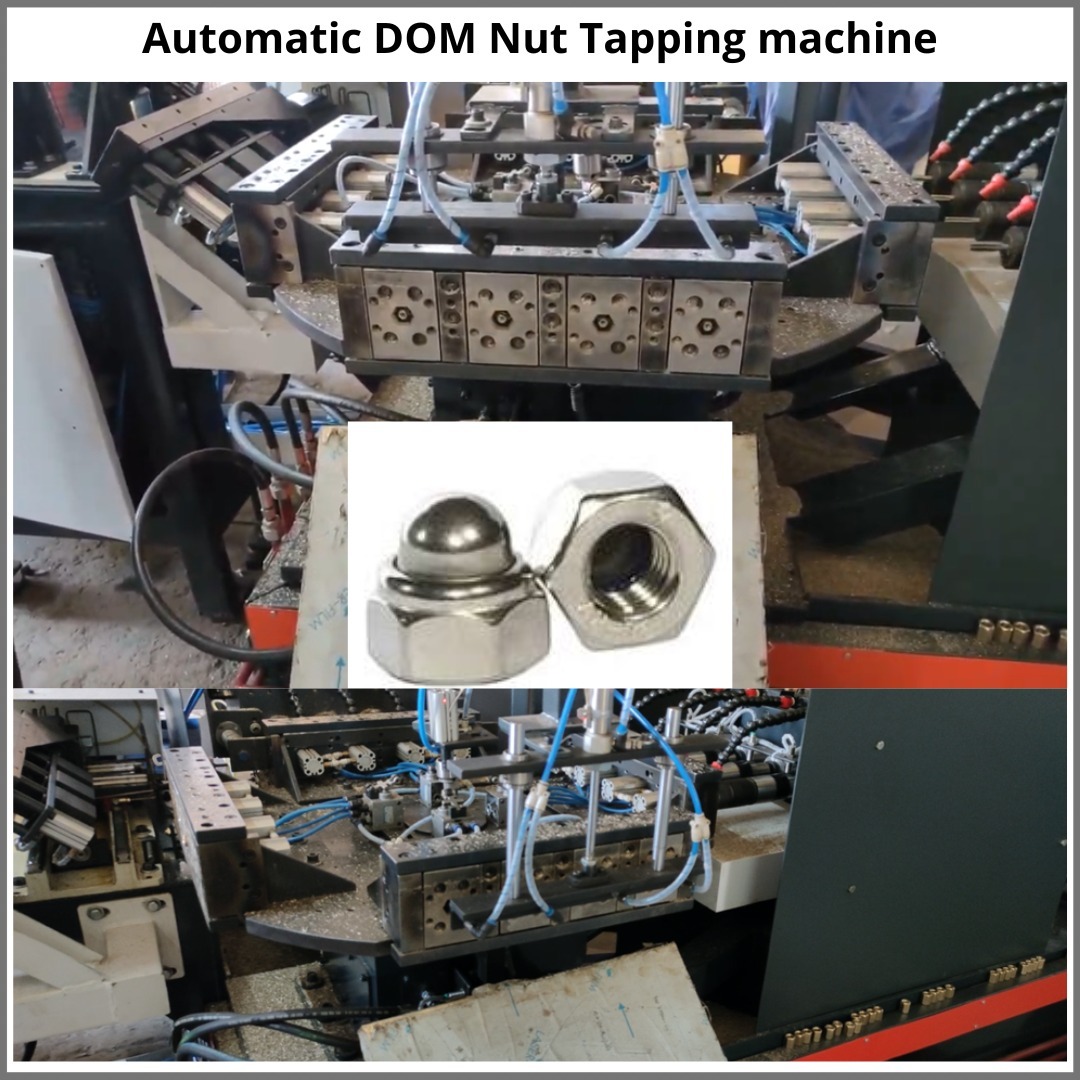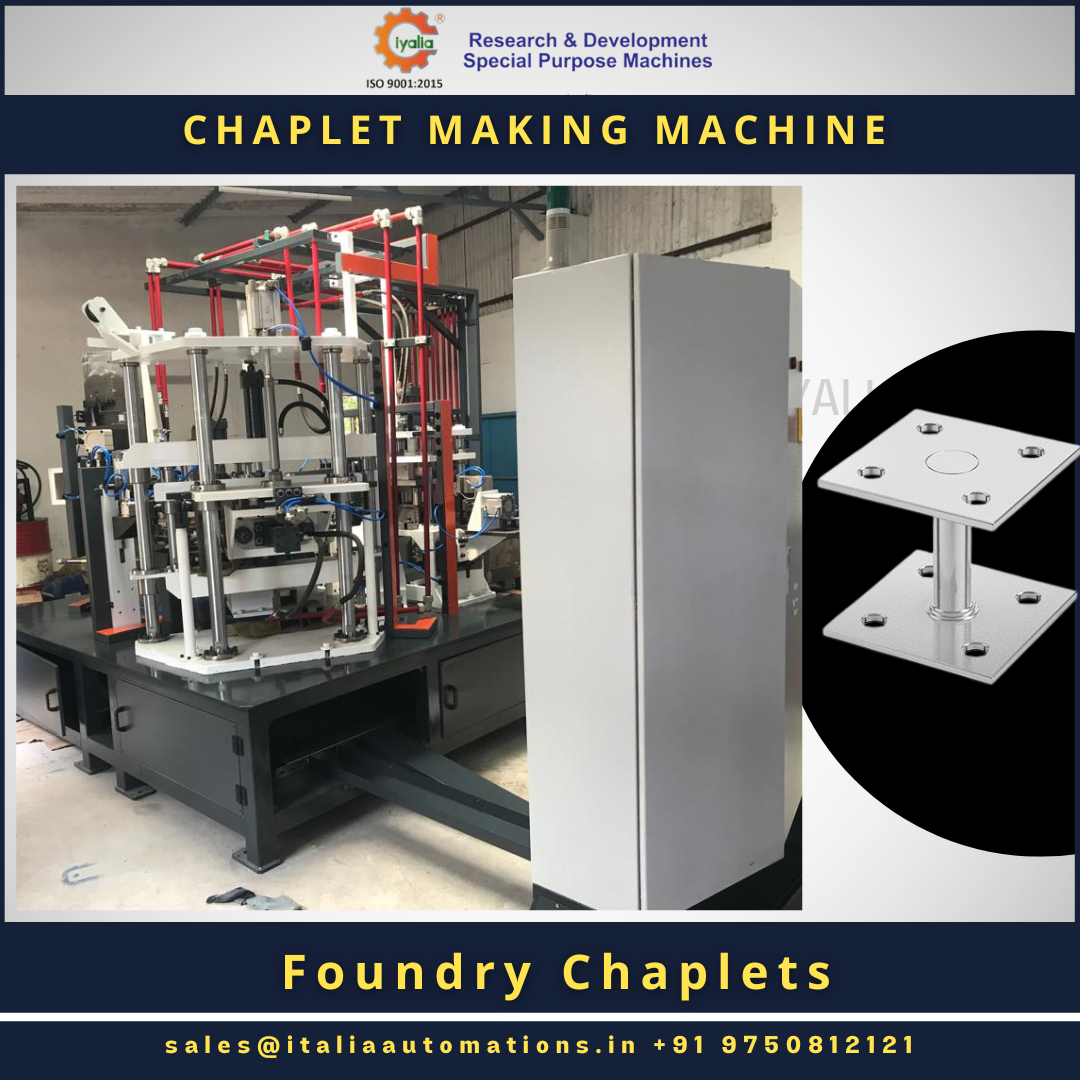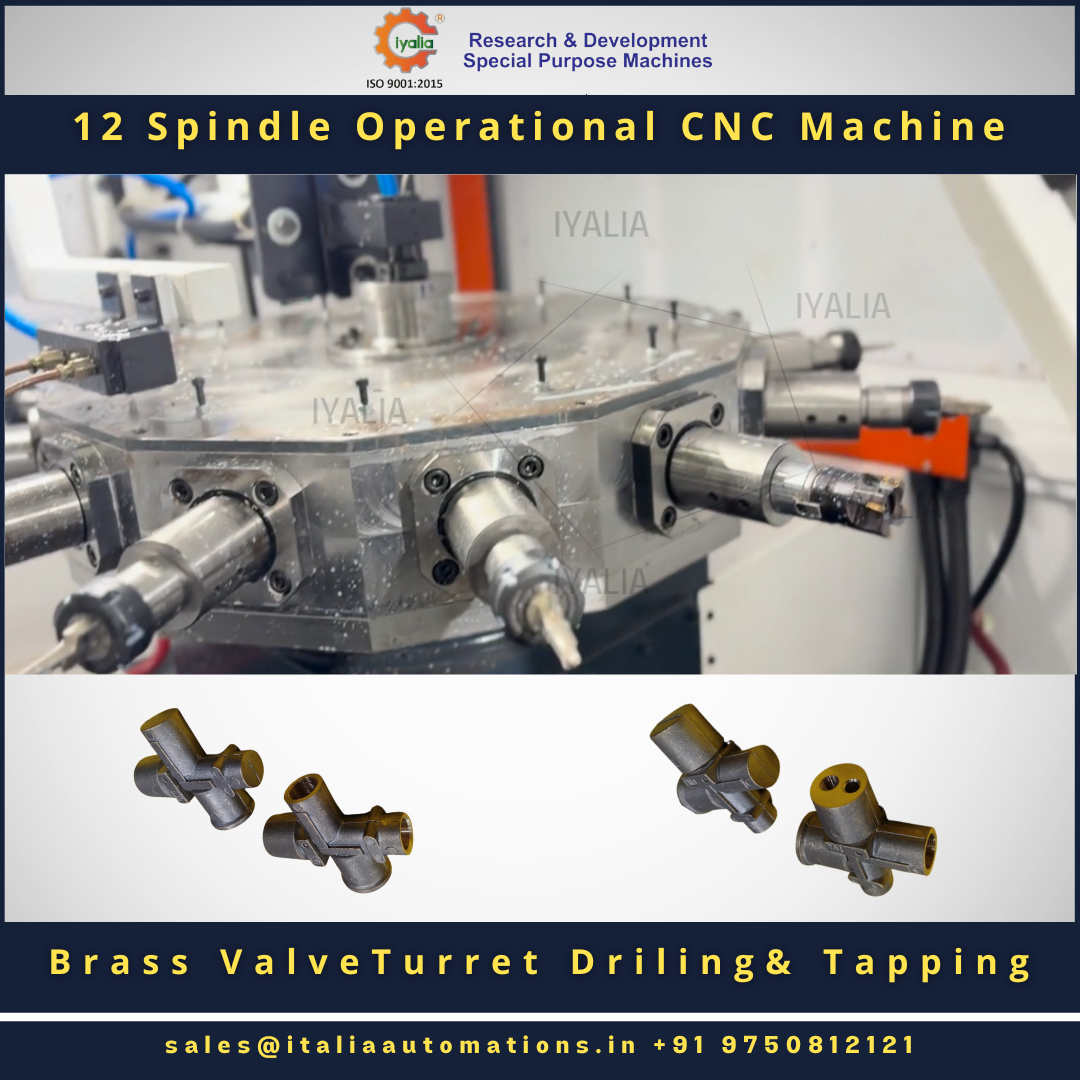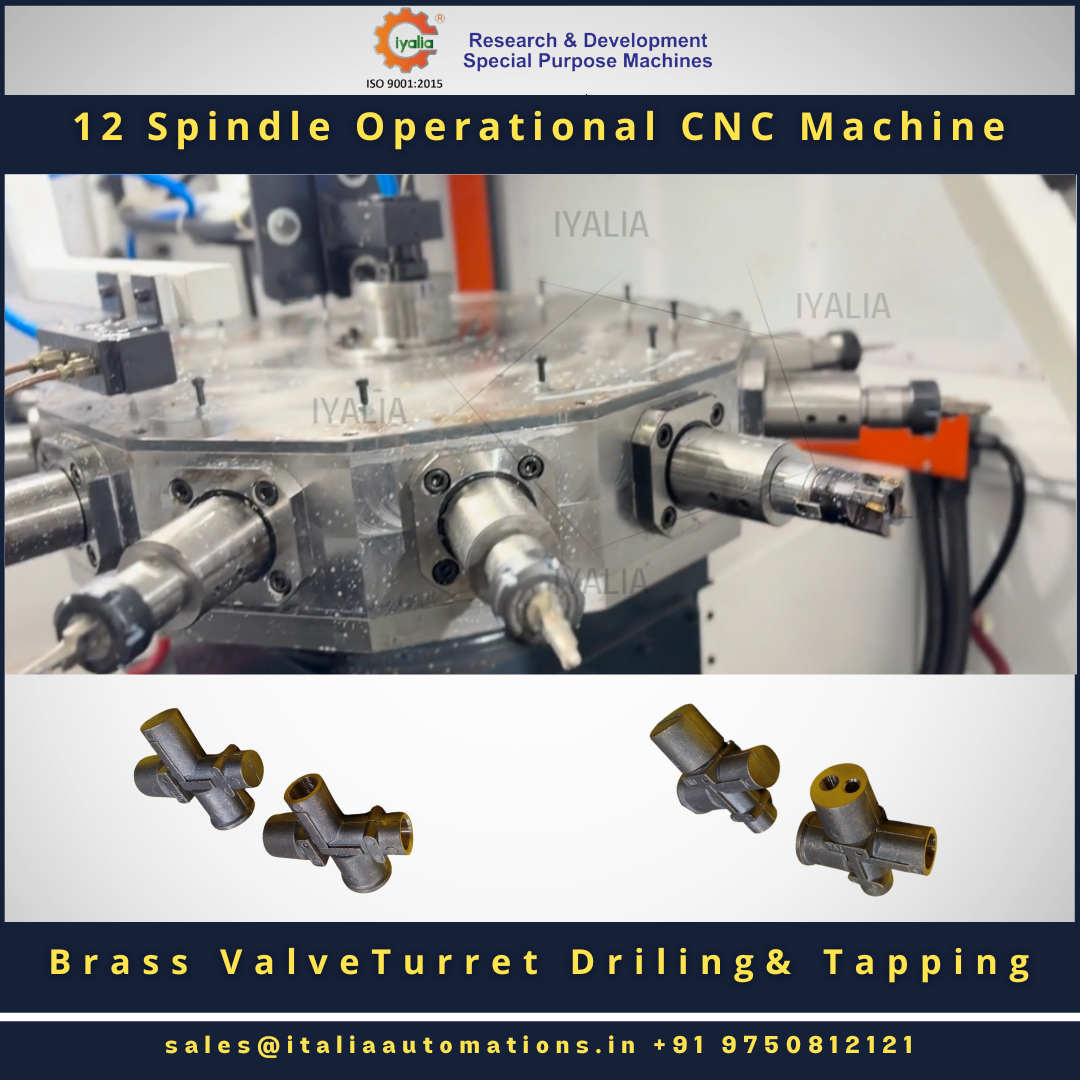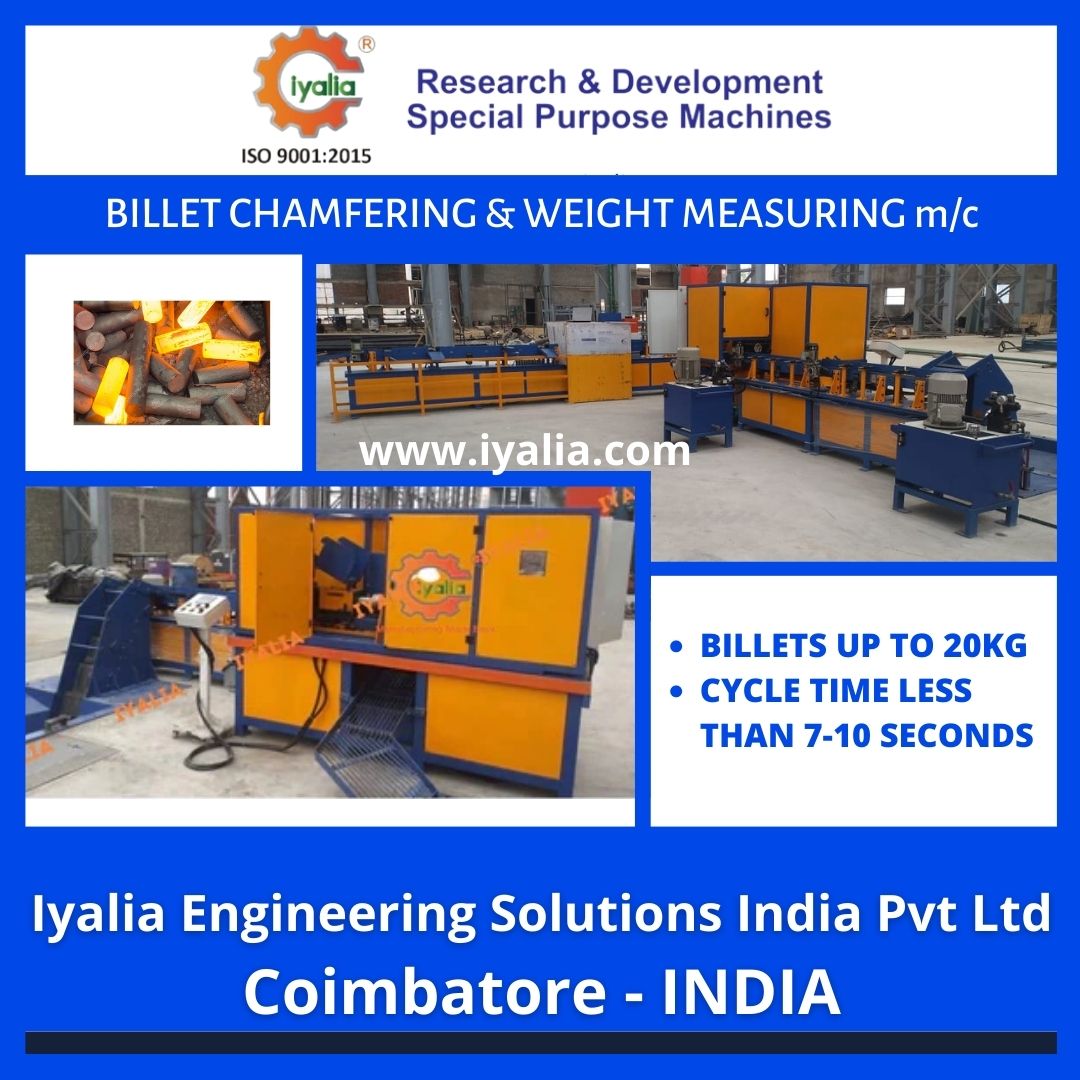
Forging automation uses technology and machinery to automate the process of forging metal parts. This involves using PLC-controlled equipment to move the Billets/parts from the bulk loading to the machine. The billets then move to the Die, and the punch is fixed press. The press can be a Hydraulic or a Mechanical press. The form required of metal components into the desired shape or design will be in the Die. Forging automation aims to increase efficiency by moving the billets automatically into the machine with a consistent working process. It reduces workforce costs, improves product quality and consistency, and enhances safety in the forging process. Automation includes the robotics arm and programmable logic controllers (PLCs), pneumatic and Servo systems, and other advanced technologies.
Billet chamfering is an essential process in hot forging as it helps to:
Improve forging quality: Removing the corners and sharp edges of the Billet reduces the risk of cracking and splitting, resulting in a higher-quality final forged product.
Facilitate the forging process: Chamfered edges allow for an easier and smoother flow of metal during forging, reducing the risk of jams and improving the efficiency of the forging process.
Increase forging lifespan: By reducing the stress concentrations at the corners of the Billet, chamfering can help to prolong the life of forging dies and tooling.
Overall, billet chamfering is a critical step in hot forging that helps to ensure high-quality, efficient, and long-lasting forging results.
A Billet Chamfering Machine is a tool used to chamfer the edges of metal billets before hot forging. The machine typically consists of a cutting tool, such as a milling cutter or a deburring wheel, that is rotated at high speed to remove material from the billet edges. The Billet is held and rotated as the cutting tool moves along the edges to produce the desired chamfer. Billet chamfering machines can be standalone units or integrated into a hot forging production line. They are commonly used in the metalworking, aerospace, and automotive industries to improve the quality and efficiency of hot forging operations.
Billet Chamfering Tools are tools used to chamfer metal billets' edges before hot forging. These tools can be manual or powered and typically include:
Milling cutters: A rotary cutting tool with teeth that remove material from the billet edges to create a chamfer.
Deburring wheels: A rotating abrasive wheel that smooths and removes sharp edges from the Billet.
The tool choice depends on the Billet's size and shape, the type of metal, and the desired chamfer geometry. Billet chamfering tools help to improve the quality and efficiency of hot forging operations by reducing the risk of cracking and splitting, facilitating the flow of metal during forging, and prolonging the life of forging dies and tooling.
A Billet Transferring System is a hot forging production line component that moves billets from one stage of the forging process to the next. This system typically includes a series of conveyors, transfer tables, or robots that transfer the billets from a storage area to a heating furnace and then from the furnace to the forging press. The transferring system must be designed to handle the billets' size and weight and ensure accurate and efficient transfer to the next stage of the forging process.
Billet Transferring Systems can be designed to be automated or manual, and they play a critical role in ensuring a smooth and efficient hot forging operation. They help to minimize downtime, increase production speed, and reduce the risk of damage to the billets and forging equipment.
Billet Weight Inspection is important in hot forging operations for the following reasons:
Quality control: Accurate weight measurement of each Billet helps to ensure that the correct amount of material is being used in each forging operation, which can impact the final quality and dimensions of the forged product.
Cutting Process Control: Billets are cut in bulk in a Circular saw or Billet cutting machine, and it is crucial to know their accurate weight accurately.
Process control: The weight of the Billet affects the heating and forging process, and it is essential to ensure that each Billet is within the specified weight range to produce a consistent and high-quality product.
Safety: Overweight billets can be dangerous to handle and can cause damage to equipment, while underweight billets can result in decreased production efficiency and quality.
Therefore, Billet Weight Inspection is a critical step in hot forging operations that help to ensure quality control, cost efficiency, process control, and safety.
Keywords
Die
PLCs
type
form
risk
jams
teeth
punch
shape
damage
robots
series
safety
easier
design
corners
tooling
material
downtime
cracking
lifespan
one stage
Hydraulic
machinery
pneumatic
splitting
aerospace
conveyors
technology
The Billet
next stage
high speed
dimensions
tool choice
metal parts
sharp edges
consistency
billet edges
weight range
bulk loading
storage area
metalworking
robotics arm
Circular saw
forging press
smoother flow
billets' size
critical step
Billets/parts
critical role
final quality
Servo systems
correct amount
milling cutter
cost efficiency
deburring wheel
forging process
heating furnace
workforce costs
Quality control
Chamfered edges
transfer tables
product quality
forging quality
standalone units
Mechanical press
chamfer geometry
metal components
production speed
essential process
following reasons
Forging automation
Overweight billets
efficient transfer
underweight billets
rotary cutting tool
high-quality product
metal billets' edges
automotive industries
stress concentrations
production efficiency
Billet cutting machine
hot forging operations
Billet Chamfering Tools
Cutting Process Control
rotating abrasive wheel
Billet Weight Inspection
PLC-controlled equipment
Billet chamfering machines
consistent working process
Accurate weight measurement
Billet Transferring Systems
other advanced technologies
A Billet Chamfering Machine
long-lasting forging results
A Billet Transferring System
programmable logic controllers
efficient hot forging operation
higher-quality final forged product
hot forging production line component
